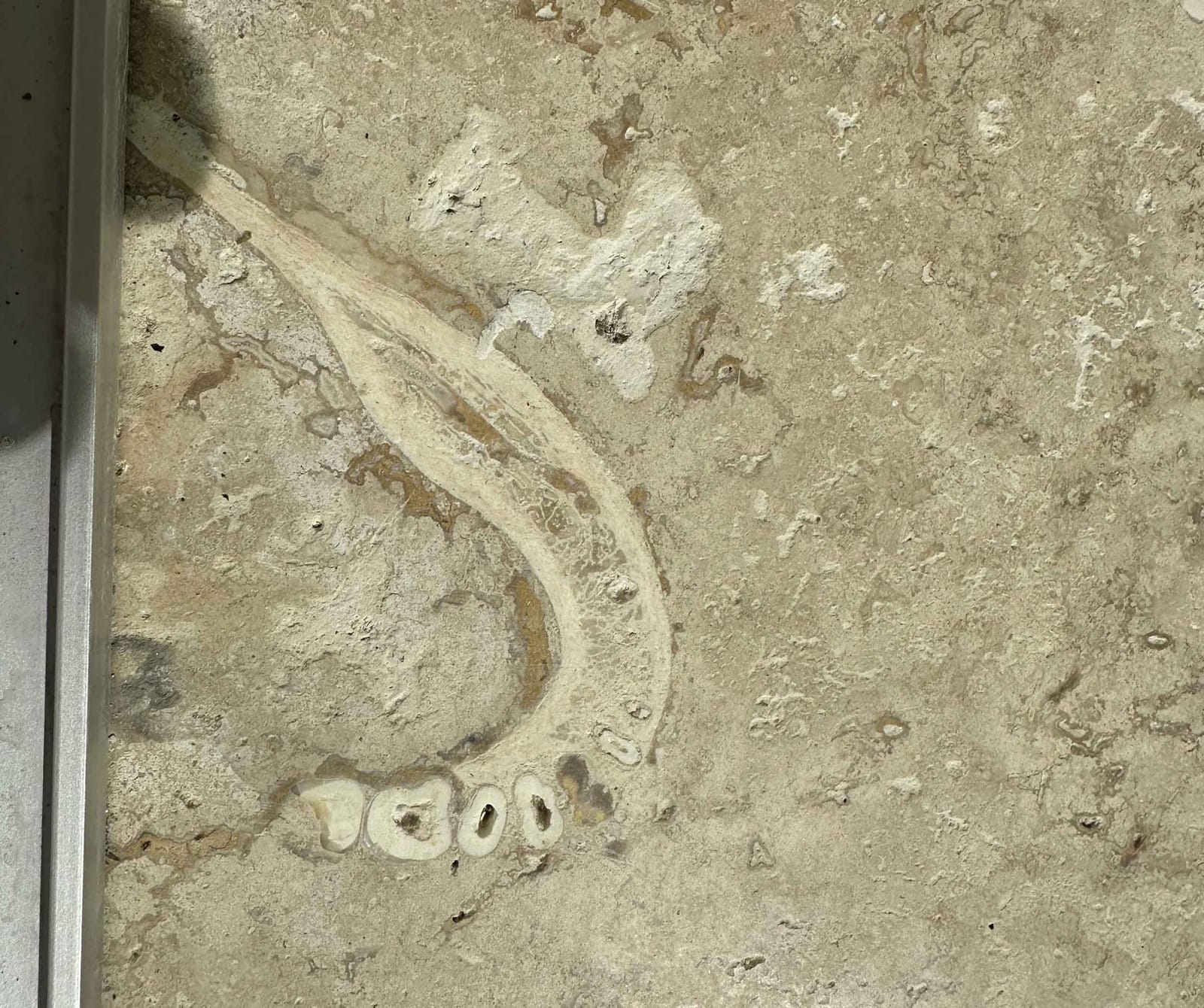maximus otter
Recovering policeman
- Joined
- Aug 9, 2001
- Messages
- 14,003
A Reddit poster finds an ancient jaw in his parents' new travertine. It may be more common than most people imagine.
…an absolutely fascinating post on Reddit today: “Found a mandible in the travertin floor at my parents house”. The poster is a dentist and visited his parents house to see the new travertine they installed. It's no surprise that he recognized something right away:

A section cut at a slight angle through a very humanlike jaw!
The Reddit user who posted the story (Kidipadeli75) has followed up with some updates over the course of the day. The travertine was sourced in Turkey, and a close search of some of the other installed panels revealed some other interesting possible fossils, although none are as strikingly identifiable as the mandible.
Travertine is a limestone that forms near natural springs. Spring water that emerges from lime-rich bedrock often carries a high concentration of dissolved calcium carbonate. When the water evaporates or cools—especially near hot springs—this calcium carbonate precipitates as rock and may form very large deposits around the spring.
Travertine also commonly includes fossils. Many are fossil inclusions of algae, plants, and small animals—especially molluscs and crustaceans—that live within the spring water. Much larger animals may be found and humans are no exceptions: Several well-known hominin fossil discoveries are from travertine deposits.
For example, the Steinrinne site is on a terrace of the Wipper River near Bilzingsleben, Germany. The site was quarried from the Middle Ages onward into the twentieth century. Naturalists took notice of the fossils there in the nineteenth century, and straight-tusked elephants, woolly rhinos, and macaques all occur in great numbers, dating to an interglacial period sometime between 470,000 and 280,000 years ago. Many of the archaeological discoveries at the site were made by Dietrich Mania starting in 1969.
Parts of at least two hominin skulls and a mandible were uncovered in the travertine during Mania's excavations.
https://johnhawks.net/weblog/how-many-bathrooms-have-neandertals-in-the-tile/
maximus otter
…an absolutely fascinating post on Reddit today: “Found a mandible in the travertin floor at my parents house”. The poster is a dentist and visited his parents house to see the new travertine they installed. It's no surprise that he recognized something right away:

A section cut at a slight angle through a very humanlike jaw!
The Reddit user who posted the story (Kidipadeli75) has followed up with some updates over the course of the day. The travertine was sourced in Turkey, and a close search of some of the other installed panels revealed some other interesting possible fossils, although none are as strikingly identifiable as the mandible.
Travertine is a limestone that forms near natural springs. Spring water that emerges from lime-rich bedrock often carries a high concentration of dissolved calcium carbonate. When the water evaporates or cools—especially near hot springs—this calcium carbonate precipitates as rock and may form very large deposits around the spring.
Travertine also commonly includes fossils. Many are fossil inclusions of algae, plants, and small animals—especially molluscs and crustaceans—that live within the spring water. Much larger animals may be found and humans are no exceptions: Several well-known hominin fossil discoveries are from travertine deposits.
For example, the Steinrinne site is on a terrace of the Wipper River near Bilzingsleben, Germany. The site was quarried from the Middle Ages onward into the twentieth century. Naturalists took notice of the fossils there in the nineteenth century, and straight-tusked elephants, woolly rhinos, and macaques all occur in great numbers, dating to an interglacial period sometime between 470,000 and 280,000 years ago. Many of the archaeological discoveries at the site were made by Dietrich Mania starting in 1969.
Parts of at least two hominin skulls and a mandible were uncovered in the travertine during Mania's excavations.
https://johnhawks.net/weblog/how-many-bathrooms-have-neandertals-in-the-tile/
maximus otter

